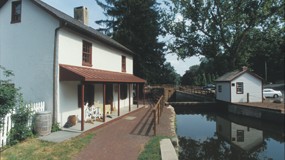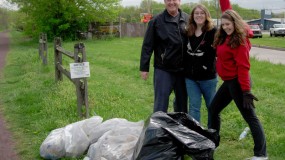Discover History on the Towpath
As temperatures rise and days get longer, it’s time to get outdoors and there is no better place than the Delaware Canal and Towpath. This 58.9-mile greenway is a great place to connect with nature and history.
There are many interesting things to see on the canal, but we are highlighting a few of our favorites to explore. We like them because they have nearby parking, some have restrooms or a portable toilet, and all provide an interactive experience where the whole family can investigate remnants of our past.
It is worth noting that before you venture out for any long-distance adventure, check the park’s closure updates (right now there are many) or our website under breaking news. Or call the Friends for advice.
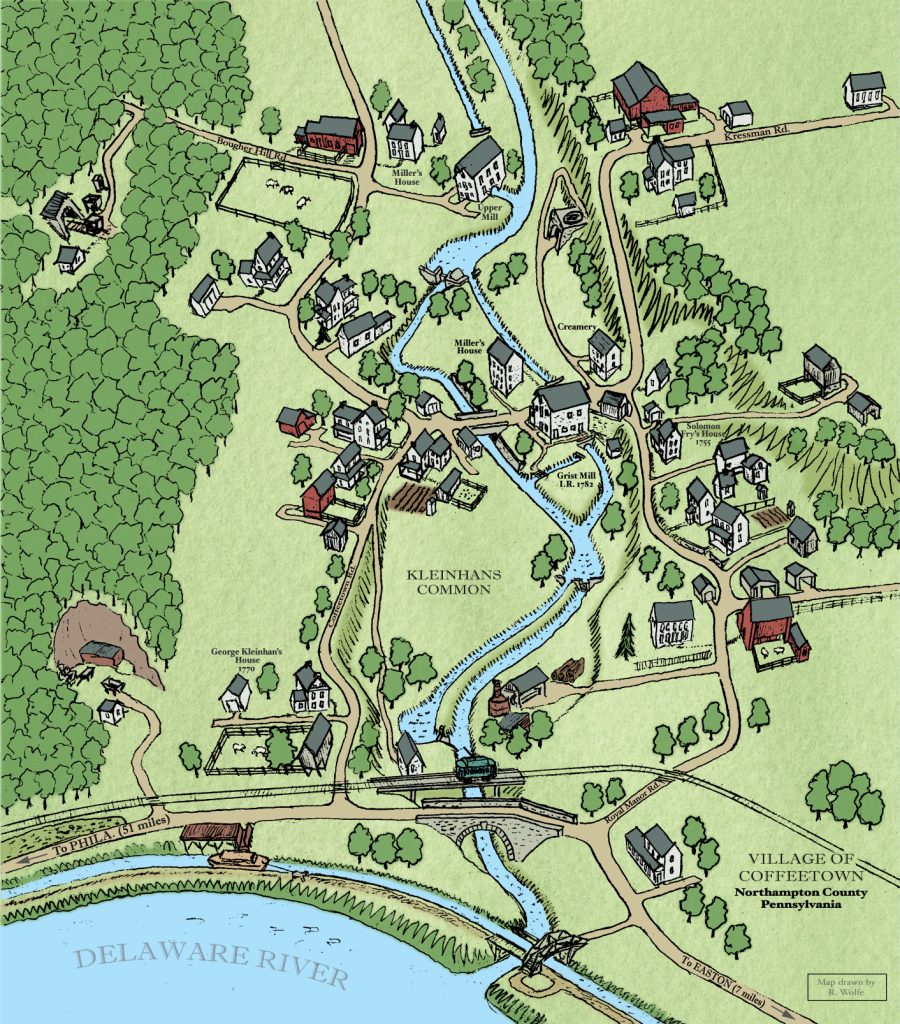 A Visit to Coffeetown and Fry’s Run Aqueduct: Mile Marker 52
A Visit to Coffeetown and Fry’s Run Aqueduct: Mile Marker 52
If you live in the northern section of the canal, closer to Easton, there are many landmarks along the way. Kleinhan’s Aqueduct and Fry’s Run, the stream that travels through the aqueduct to the river, are located at mile marker 52. This area is also called Coffeetown, known for a few enterprising women who roasted a mix of grains to mimic the taste of coffee. Coffee was a rare and pricey commodity and out of reach of most farmers and villagers.
Fry’s Run once powered grist mills and lumber mills and the area called Coffeetown developed into a small village by the late 1800s which included retail establishments, a school and a post office along with thriving industries.
Today, the village is commemorated at Fry’s Run Park with an exhibit that tells the story of Coffeetown. There’s also an observation deck, and remnants of a stone arch bridge, the oldest bridge in Northampton County which still provides a nice walking path and view of the creek.
What to look for when you visit:
• Fry’s Run Park with interpretive displays
• The 198-year-old stone M. Opp Bridge
• Fry’s Run (aka Kleinhans) Aqueduct and footbridge
• Overlook deck at Fry’s Run Park (built on the remnants of an old trolley line)
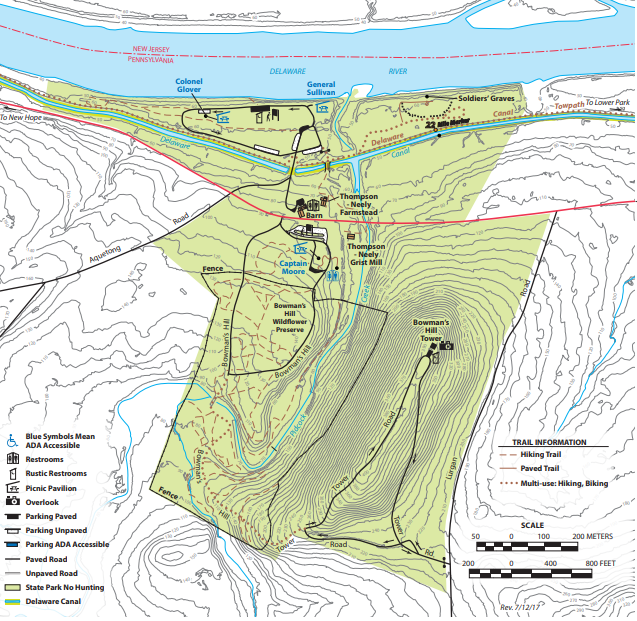 Uhlerstown, “The Best Preserved Hamlet in America”: Mile Marker 40
Uhlerstown, “The Best Preserved Hamlet in America”: Mile Marker 40
Further south near mile markers 39 and 40, you will find the hamlet of Uhlerstown. Parking is located in the nearby Tinicum Park, a mile from the Uhlerstown Historic District.
Named for Michael Uhler, this quaint and well-preserved piece of history was once a thriving industrial village, home to a lumber mill, grist mill, lime kilns, a boat building and repair yard, a stable and a hotel with a colorful past. Michael Uhler also built the mansion which is situated close to the base of the cliff. This home was one of the show places along the canal.
On a visit to this hamlet, you will find the Uhlerstown covered bridge, the only one over the Canal. The bridge is called a “lattice type” and records show that it was in use in 1832. Windows on the sides of the bridge are another unique feature.
The Uhlerstown Hotel, built about 1840, is now a private residence as is the Uhlerstown Hall. The Locktender’s House and lock are also worth seeing as are the remnants of the lime kilns.
Uhlerstown is a historic district that includes surrounding agricultural land. If you tour the area, please keep in mind that these are private residences.
What to look for when you visit:
• Uhler’s Mansion
• Covered bridge
• Lime kilns
• Lock 16 and the Locktender’s House, which is a private residence
Washington Crossing Historic Park, A National Treasure: Mile Marker 23
This historic park encompasses approximately 500 acres with many well-preserved points of interest and significance. The park is generally divided into the north and south sections. In the northern section, you will find Bowman’s Tower, the Thompson-Neely House and Gristmill, and the graves of unknown soldiers. In the south, you will find the Visitors Center along with the historic village of Taylorsville and the Washington Crossing Lagoon, a favorite spot for herons and other waterfowl. Tours of the park are an excellent way to get a glimpse of life on a farm in the 18th century
Visiting the northern section of the park you can tour the recently restored Thompson-Neely House. Originally built in four distinct sections, the central portion dates to 1702 when it was built as a one-room dwelling by John Pidcock. During the winter campaign of 1776/1777, the house was used as a makeshift hospital to treat sick and convalescing soldiers.
Restored by the Friends with contributions from our members and supporters, the Thompson-Neely Camelback Bridge Is one of the six remaining authentic camelback bridges that traverse the canal.
Located close to the shore of the Delaware River, the Soldiers’ Graves honor America’s unknown soldiers and Capt. James Moore, of the New York Artillery. He died on December 25, 1776, at the Thompson-Neely house. His is the only marked grave.
What to look for when you visit:
• Thompson-Neely House and the barn (plus the flock of sheep)
• Camelback bridge
• Soldiers’ Graves
Bristol Borough, Where the Delaware Canal & Bristol Marsh Meet: Mile Marker 1
Bristol Borough is the third oldest town in Pennsylvania and the second-chartered borough in Pennsylvania. Samuel Clift founded the town on March 4, 1681, after receiving a grant from the governor of New York. Clift was required to start a ferry to Burlington and maintain a public house to receive his grant of 252 acres. A ferry, including the Steamboat Columbia beginning in 1876, was in operation until the construction of the Burlington-Bristol bridge in 1930.
There are many historic homes and structures in Bristol. The King George II Inn was the public house built by Clift. It was known as the Ferry House in the early days. George Washington and Martha (although not at the same time) are reputed to have slept here.
As plots of land were parceled and sold, the town began to flourish. Today, visitors can take a self-guided tour of the many historic homes on Radcliff Street enjoy the view at Waterfront Park, or retrace the original path of the canal using the blue bollards that mark the way. Other buildings and places worth a visit while in Bristol include the Grundy Museum and Library as well as the Canal Works Building which is adjacent to the Grundy Mill and Clock Tower. Lagoon Park is also a favorite spot for visitors with parking and a playground for children to enjoy.
What to look for when you visit:
• Radcliff Street
• Waterfront Park and monuments to the Hispanic, Irish and African-American communities, all of which played an important role in the history and development of the town.
• Martha Grundy Museum
• Lagoon Park
• Canal Trail
More to explore
The Delaware Canal covers a lot of territory. To help navigate the park, the Friends maintain and publish a Landmark and Mileage Chart. This traveler’s guide to the Delaware Canal State Park was the brainchild of Pete Sperry, a long-time member of the Friends and former Board member. After going on several walks, Pete was frustrated by the of lack information on the points of interest along the way. So, in 2002, he took on the task of documenting the locations of structures, landmarks, and amenities from Bristol Lagoon to Easton.
After four years of research, measurement, and compilation, the Landmarks and Mileage Chart made its debut in 2006. It is now in its sixth edition. It has become the primary reference tool used by visitors, planners, engineers, and State Park staff.
This was a labor of love involving lots of maps and software to get the coordinates and mileage points just right. Today, the information is reviewed periodically for accuracy, and updates are made as needed.
Once the mileage points along the canal were identified, the Friends installed mile marker posts. Over time, these posts became a nuisance to maintain, and a more permanent solution was developed. Granite markers were placed on the side of the towpath every mile along the full length of the canal. These mileage indicators are a great resource for any hiker, biker or someone looking for a restful picnic spot.
Where Am I?
To help you find what you are looking for, the chart is color-coded by type of amenity. This is a useful tool if you are trying to find a parking area or a location with a year-round restroom.

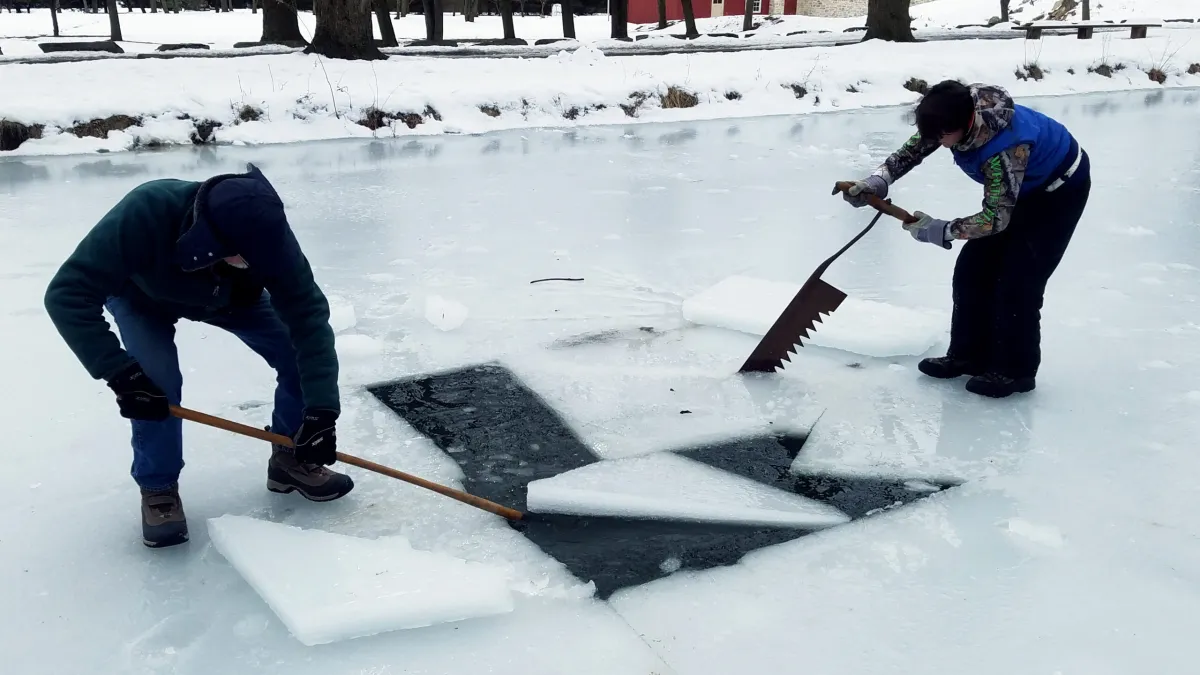 Most Canal boatmen and their families would take to solid ground in the winter. Many Canallers had established homesteads on land, or they would move to a nearly town or shanty. According to some oral histories, there were people, mostly young men, who might spend the colder months on the boat, but that was an exception, not the rule.
Most Canal boatmen and their families would take to solid ground in the winter. Many Canallers had established homesteads on land, or they would move to a nearly town or shanty. According to some oral histories, there were people, mostly young men, who might spend the colder months on the boat, but that was an exception, not the rule.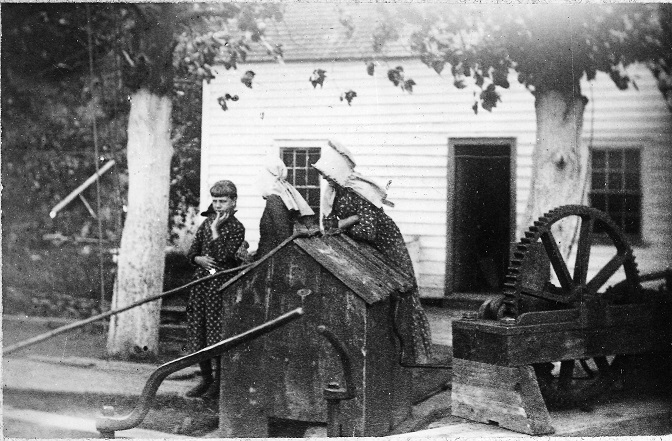
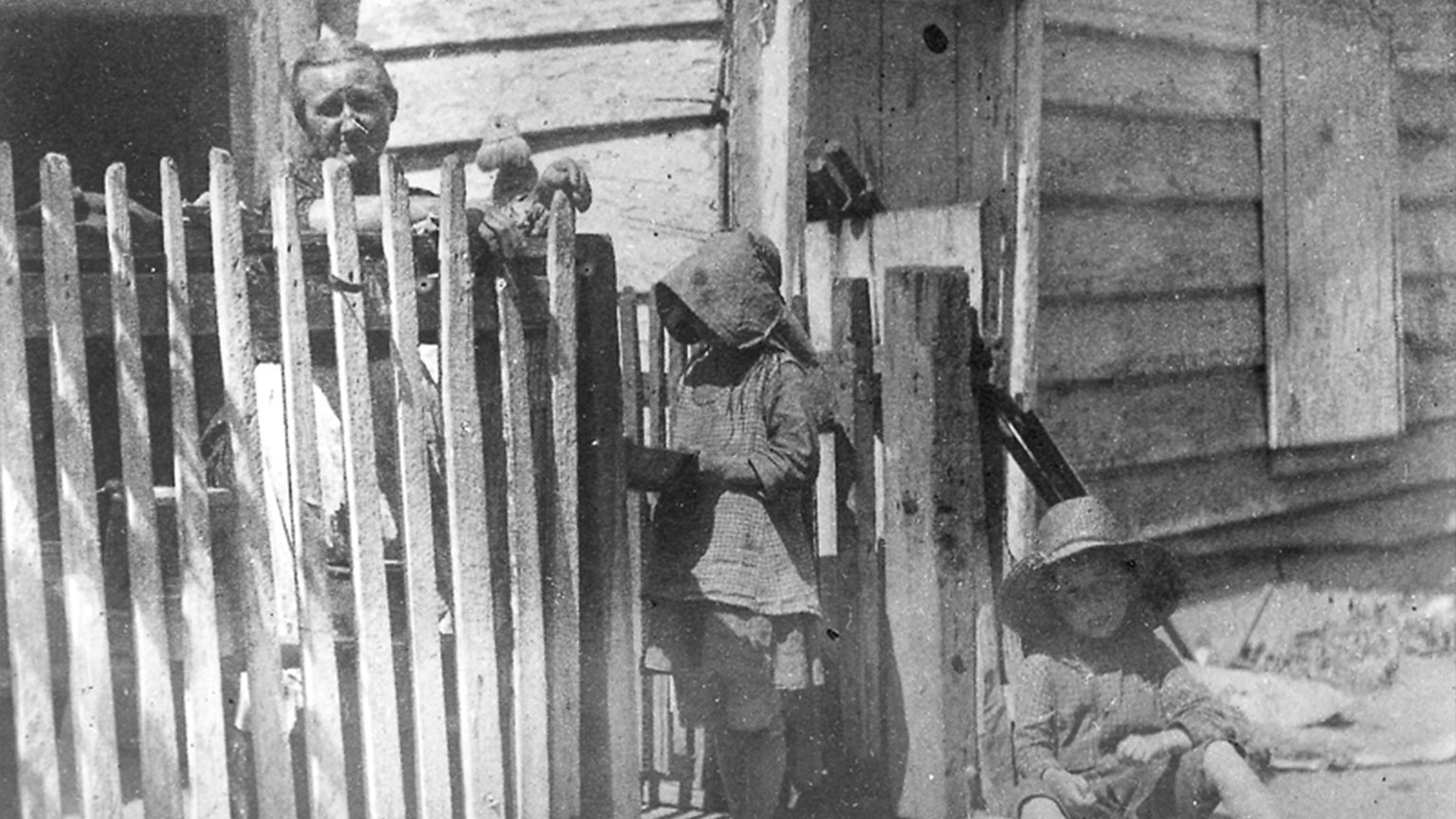
 Last year, on July 4th weekend, several favorite spots along the canal exceeded capacity. The gates at the Virginia Forrest Recreation Area had to be closed due to overcrowding. Since the pandemic, the number of visitors has continued to grow along with their impact on the local economy.
Last year, on July 4th weekend, several favorite spots along the canal exceeded capacity. The gates at the Virginia Forrest Recreation Area had to be closed due to overcrowding. Since the pandemic, the number of visitors has continued to grow along with their impact on the local economy.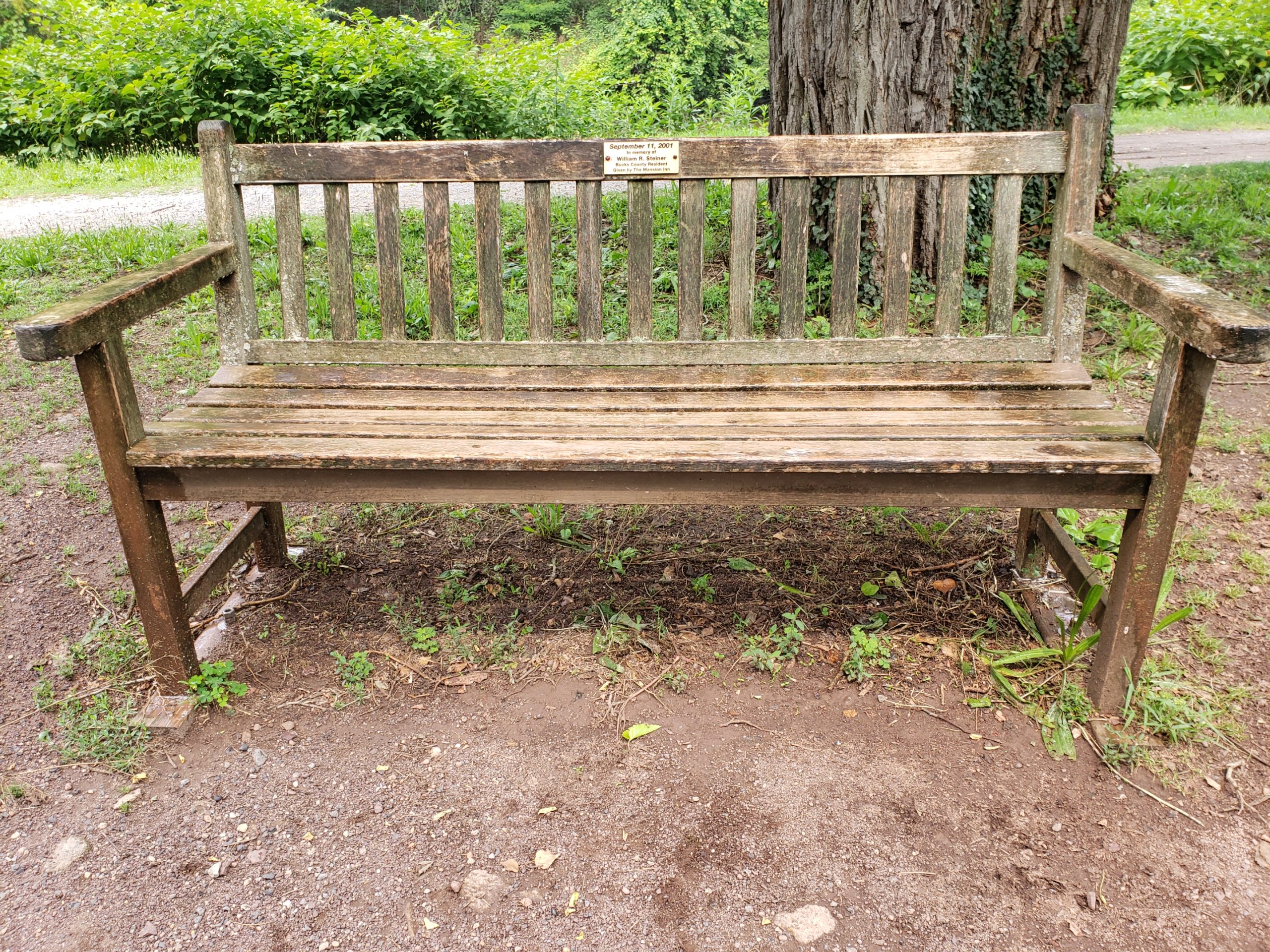
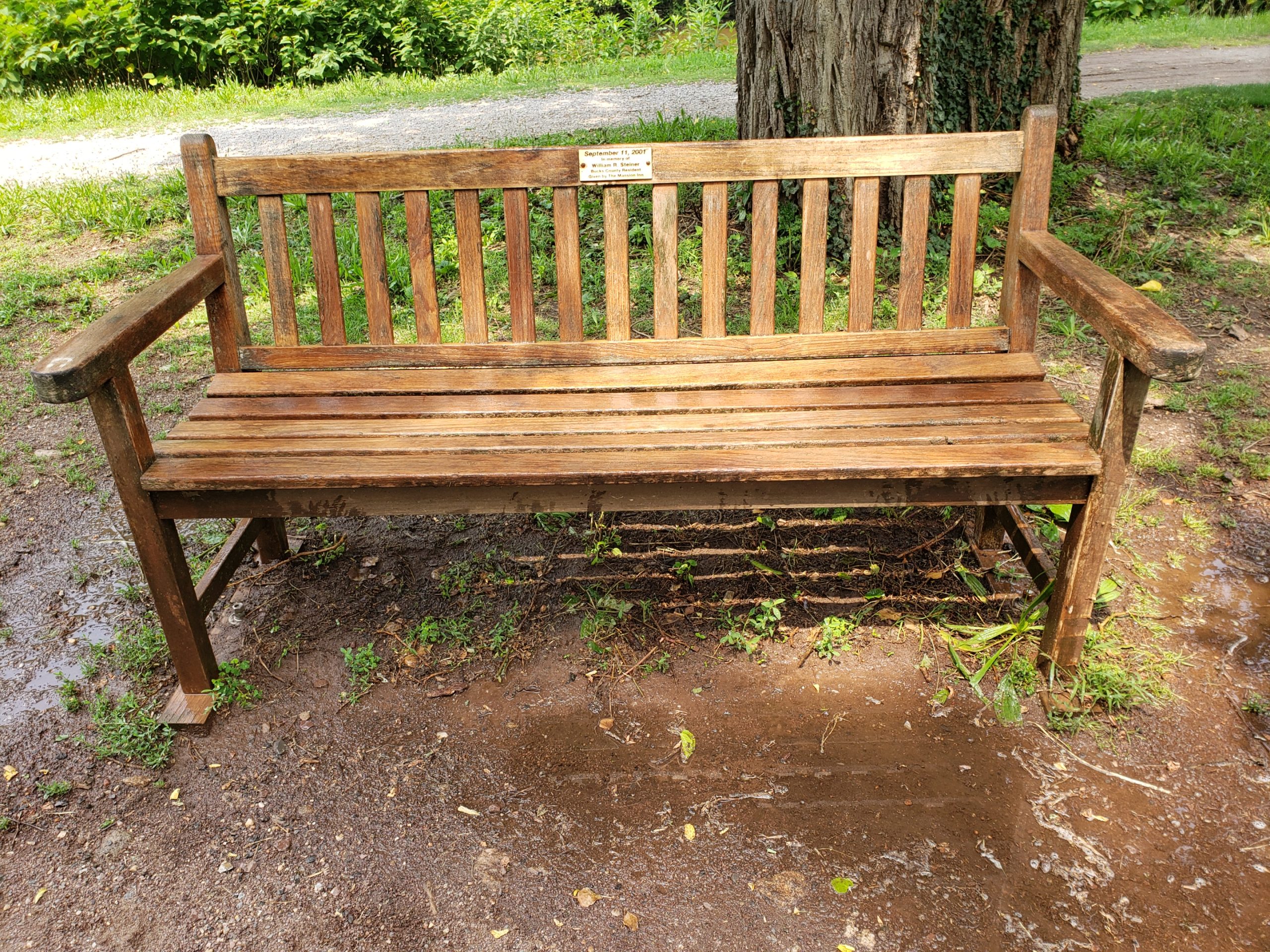
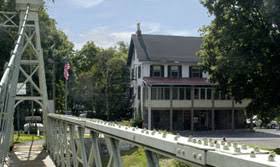 This Inn was built in 1838 by Benjamin Riegel, a wealthy miller who owned property on either side of the Delaware River. His New Jersey operations included a grist mill and an oil mill. John Riegel, the grandson of Benjamin, continued the industrial legacy of the family by adding a paper mill which became known as the Riegel Paper Company, one of the largest employers in the area until the 1990’s.
This Inn was built in 1838 by Benjamin Riegel, a wealthy miller who owned property on either side of the Delaware River. His New Jersey operations included a grist mill and an oil mill. John Riegel, the grandson of Benjamin, continued the industrial legacy of the family by adding a paper mill which became known as the Riegel Paper Company, one of the largest employers in the area until the 1990’s.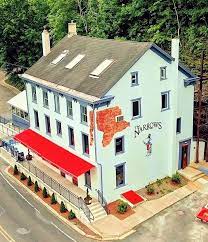 The Lenape Indian Tribe originally inhabited the site of the current Inn and restaurant. They used a deep natural pool in the rocks at the base of the Nockamixon Cliffs as a holding tank for fish they had caught in the Delaware River. When the current building was erected in 1820, owner Jacob Krouse used the rock walls of the tank as his new tavern’s foundation. The tavern license for the site dates back to 1812 when the pilots of lumber rafts were served a blicky (quart) of beer for a nickel.
The Lenape Indian Tribe originally inhabited the site of the current Inn and restaurant. They used a deep natural pool in the rocks at the base of the Nockamixon Cliffs as a holding tank for fish they had caught in the Delaware River. When the current building was erected in 1820, owner Jacob Krouse used the rock walls of the tank as his new tavern’s foundation. The tavern license for the site dates back to 1812 when the pilots of lumber rafts were served a blicky (quart) of beer for a nickel.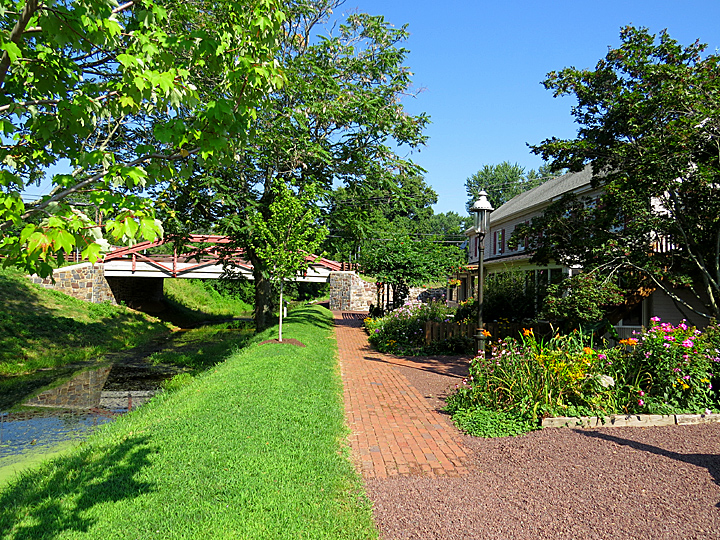 Another popular spot along the Canal is the Homestead General Store. This business has served the local community since the early 1800’s and is the oldest continuously operating general store in Bucks County providing provisions as well as a place to trade some canal gossip.
Another popular spot along the Canal is the Homestead General Store. This business has served the local community since the early 1800’s and is the oldest continuously operating general store in Bucks County providing provisions as well as a place to trade some canal gossip.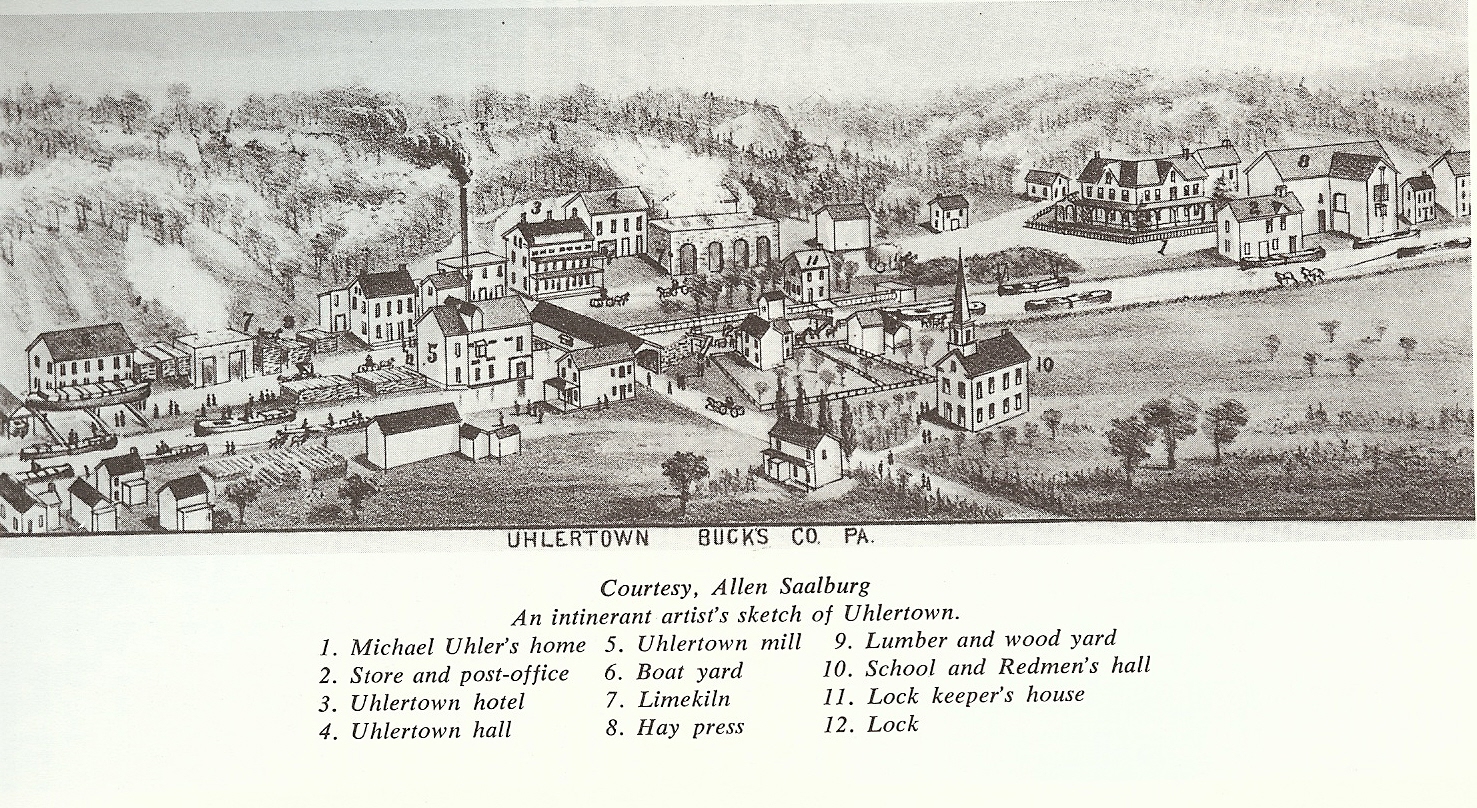 Now a private residence, the Uhlerstown Hotel was once a favorite resting spot for weary travelers. Built around 1840, the hotel was added to the National Register of Historic Places in 1994. Today, the entire hamlet is listed as a historic district.
Now a private residence, the Uhlerstown Hotel was once a favorite resting spot for weary travelers. Built around 1840, the hotel was added to the National Register of Historic Places in 1994. Today, the entire hamlet is listed as a historic district.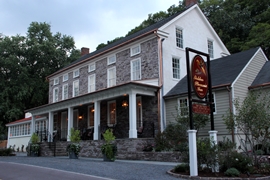 Originally called the Delaware House, the Golden Pheasant Inn was built in 1857 to cater to the canal trade. The Inn offered housing for men and mules along with provisions. When the Canal closed in 1931, the Inn suffered hard times until 1967, when it was purchased by Ralph Schneider, who named it the Golden Pheasant Inn.
Originally called the Delaware House, the Golden Pheasant Inn was built in 1857 to cater to the canal trade. The Inn offered housing for men and mules along with provisions. When the Canal closed in 1931, the Inn suffered hard times until 1967, when it was purchased by Ralph Schneider, who named it the Golden Pheasant Inn.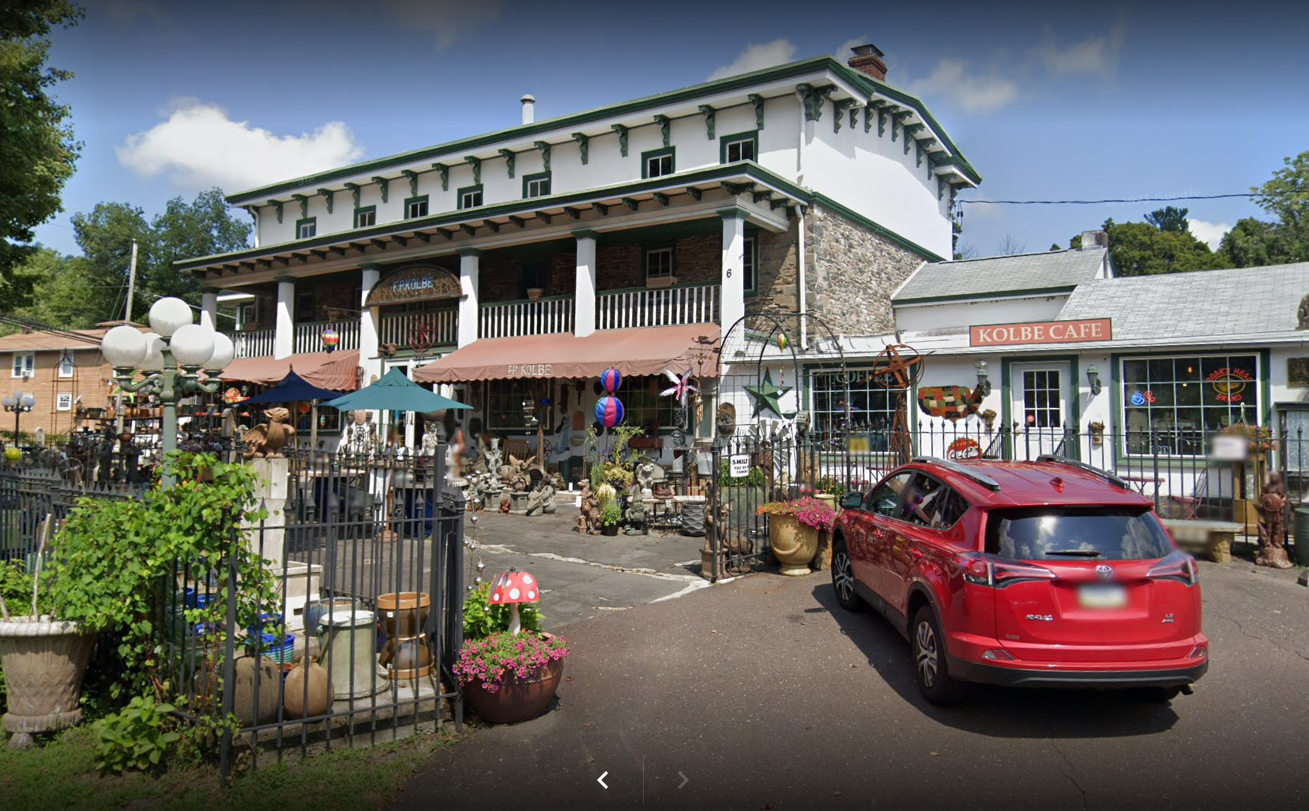 At one time, Point Pleasant was a bustling commercial center largely catering to the canal and carriage trade and then to vacationers who discovered the charms of this river valley town.
At one time, Point Pleasant was a bustling commercial center largely catering to the canal and carriage trade and then to vacationers who discovered the charms of this river valley town. < Dame’s Rocket is a flowering biennial member of the mustard family. This plant has some historical significance as it was recorded as one of the first wildflowers imported to the colonies from Europe. Also known as Sweet Rocket, its fragrance is most pronounced in the evening sometimes confused with Phlox, the flower of Dame’s Rocket has four petals, versus Phlox, which has five. The flowers come in an assortment of spring colors, including white, pink, and purple. It prefers to grow in sunny, moist locations and can be found on the margins of marshes and woodlands. It is considered an invasive species in Pennsylvania.
< Dame’s Rocket is a flowering biennial member of the mustard family. This plant has some historical significance as it was recorded as one of the first wildflowers imported to the colonies from Europe. Also known as Sweet Rocket, its fragrance is most pronounced in the evening sometimes confused with Phlox, the flower of Dame’s Rocket has four petals, versus Phlox, which has five. The flowers come in an assortment of spring colors, including white, pink, and purple. It prefers to grow in sunny, moist locations and can be found on the margins of marshes and woodlands. It is considered an invasive species in Pennsylvania. 